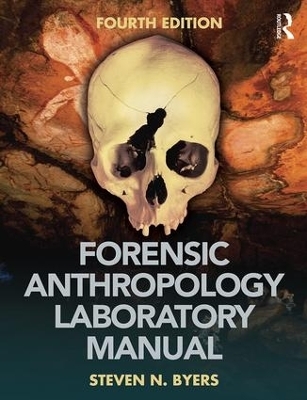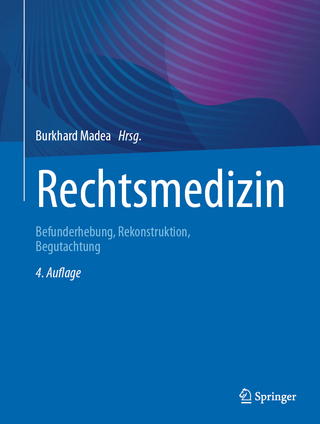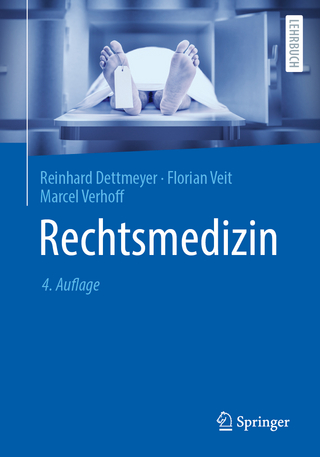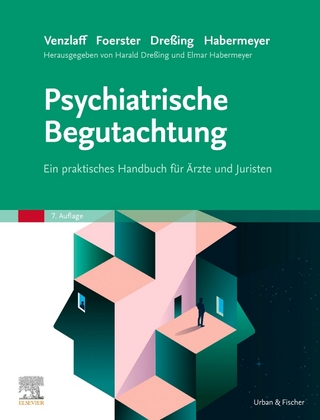
Forensic Anthropology Laboratory Manual
Routledge (Verlag)
978-1-138-69073-8 (ISBN)
Steven N. Byers has a Ph.D. in Anthropology from the University of New Mexico (UNM), USA. Now retired, he worked for a number of years on various campuses of UNM, teaching courses in Forensic Anthropology, Biological Anthropology, and Archaeology. He is currently serving on the Anthropology Consensus Body of the American Academy of Forensic Sciences Standards Board, in addition to focusing on Southeastern United States bioarchaeology. Byers’ publications with Routledge include this title's sister volume Introduction to Forensic Anthropology (in its 5th edition).
Preface
Note to Instructors
Note to Students
1 Introduction
Learning Objectives
Expected Outcomes
Minimum Materials
Optional Materials
Exercise 1.1: Basic Instruments and Their Use
Exercise 1.2: Metric System and U.S. Measure
Note to Instructors
Exercise Worksheets
2 Basics of Human Osteology and Odontology
Learning Objectives
Expected Outcomes
Minimum Materials
Optional Materials
Basic Terms
Exercise 2.1: Cranial Skeleton
Exercise 2.2: Axial Skeleton
Exercise 2.3: Appendicular Skeleton: Upper Limbs
Exercise 2.4: Appendicular Skeleton: Lower Limbs
Exercise 2.5: Human Odontology
Note to Instructors
Exercise Worksheets
3 Establishing Medicolegal Significance
Learning Objectives
Expected Outcomes
Bone and Teeth Versus Other Material Exercise
Minimum Materials
HUMAN VERSUS NONHUMAN EXERCISE
Minimum Materials
Optional Materials
CONTEMPORARY VERSUS NONCONTEMPORARY EXERCISE
Minimum Materials
Optional Materials
Exercise 3.1: Distinguishing Bone and Teeth From Other Material
Exercise 3.2: Distinguishing Human from Nonhuman Remains
Exercise 3.3: Distinguishing Contemporary from Noncontemporary Remains
Note to Instructors
Exercise Worksheets
4 Recovery Scene Methods
Learning Objectives
Expected Outcomes
Minimum Materials
Optional Materials
Exercise 4.1: Surface-Deposited Body (Outdoor or Indoor)
Exercise 4.2: Interred Body (Outdoor)
Note to Instructors
Exercise Worksheets
5 Estimating Postmortem Interval
Learning Objectives
Expected Outcomes
Minimum Materials
Optional Materials
Exercise 5.1: Estimating PMI Using General Decomposition
Exercise 5.2: Estimating PMI Using TADS and ADD
Exercise 5.3: Estimating PMI Using Animal Scavenging
Exercise 5.4: Estimating PMI Using Deterioration
of Clothing and Other Materials
Note to Instructors
Exercise Worksheets
6 Initial Treatment and Examination
Learning Objectives
Expected Outcomes
Minimum Materials
Optional Materials
Exercise 6.1: Reconstruction
Exercise 6.2: Sorting
Exercise 6.3: Reassembly
Exercise 6.4: Inventorying Remains
Exercise 6.5: Highly Fragmented Remains
Note to Instructors
Exercise Worksheets
7 Attribution of Ancestry
Learning Objectives
Expected Outcomes
Minimum Materials
Optional Materials
Exercise 7.1: Attributing Ancestry Using Cranial Anthroposcopy
Exercise 7.2: Attributing Ancestry Using Frequencies of Cranial Anthroposcopic Traits
Exercise 7.3: Attributing Ancestry Using Cranial Metrics:
Interorbital Indexes
Exercise 7.4: Attributing Ancestry Using Cranial Metrics:
Discriminant Functions
Exercise 7.5: Attributing Ancestry Using Postcranial Anthroposcopy
and Osteometry
Note to Instructors
Exercise Worksheets
8 Attribution of Sex
Learning Objectives
Expected Outcomes
Minimum Materials
Optional Materials
Exercise 8.1: Attributing Sex Using Pelvic Anthroposcopy
Exercise 8.2: Attributing Sex Using Pelvic Metrics:
Ischium–Pubic Index
Exercise 8.3: Attributing Sex Using Cranial Anthroposcopy
Exercise 8.4: Attributing Sex Using Cranial Metrics:
Discriminant Functions
Exercise 8.5: Attributing Sex Using Postcranial Metrics
Note to Instructors
Exercise Worksheets
9 Estimation of Age at Death
Learning Objectives
Expected Outcomes
Minimum Materials
Optional Materials
SUBADULTS
Exercise 9.1: Estimating Age at Death (Subadults)
Using Long Limb Bone Measurements
Exercise 9.2: Estimating Age at Death (Subadults)
Using Union of Primary Ossification Centers
Exercise 9.3: Estimating Age at Death (Subadults)
Using Tooth Formation and Eruption
Exercise 9.4: Estimating Age at Death (Subadults)
Using Epiphyseal Union
ADULTS
Exercise 9.5: Estimating Age at Death (Adults)
Using Symphyseal Surface
Exercise 9.6: Estimating Age at Death (Adults)
Using Auricular Surface of the Os Coxae
Exercise 9.7: Estimating Age at Death (Adults)
Using Sternal Rib Ends
Exercise 9.8: Estimating Age at Death (Adults)
Using Cranial Suture Closure
Note to Instructors
Exercise Worksheets
10 Calculation of Stature
Learning Objectives
Expected Outcomes
Minimum Materials
Optional Materials
Exercise 10.1: Calculating Stature Using Long Limb Bones
Exercise 10.2: Calculating Stature Using the Fully Method
Exercise 10.3: Calculating Stature from Fleshed Body Segments
Exercise 10.4: Calculating Stature Using Partial Long Limb Bones
Exercise 10.5: Adjustments to Stature Calculations
Note to Instructors
Exercise Worksheets
11 Death, Trauma, and the Skeleton
Learning Objectives
Expected Outcomes
Minimum Materials
Optional Materials
Exercise 11.1: Basics of Bone Trauma
Exercise 11.2: Forces Causing Trauma
Exercise 11.3: Types of Trauma
Exercise 11.4: Timing of Bone Injury
Note to Instructors
Exercise Worksheets
12 Projectile Trauma
Learning Objectives
Expected Outcomes
Minimum Materials
Optional Materials
Exercise 12.1: Analysis of Projectile Wounds
Note to Instructors
Exercise Worksheets
13 Blunt Trauma
Learning Objectives
Expected Outcomes
Minimum Materials
Optional Materials
Exercise 13.1: Analyzing Blunt Trauma to the Skull
Exercises 13.2A and 13.2B: Analyzing Blunt Trauma to the
Postcranial Bones
Note to Instructors
Exercise Worksheets
14 Sharp and Miscellaneous Trauma
Learning Objectives
Expected Outcomes
Minimum Materials
Optional Materials
Exercise 14.1: Analyzing Sharp Trauma
Exercise 14.2: Analyzing Strangulation
Note to Instructors
Exercise Worksheets
15 Antemortem Skeletal Conditions
Learning Objectives
Expected Outcomes
Minimum Materials
Optional Materials
Exercise 15.1: Analyzing Pathological Conditions
Exercise 15.2: Analyzing Skeletal Anomalies
Exercise 15.3: Analyzing Occupational Stress Markers
Note to Instructors
Exercise Worksheets
16 Postmortem Changes to Bone
Learning Objectives
Expected Outcomes
Minimum Materials
Optional Materials
Exercise 16.1: Analyzing Saw Marks
Exercise 16.2: Analyzing Other Postmortem Damage
Note to Instructors
Exercise Worksheets
17 Additional Aspects of Individualization
Learning Objectives
Expected Outcomes
Minimum Materials
Optional Materials
Exercise 17.1: Facial Approximation
Exercise 17.2: Estimating Body Weight
Note to Instructors
Exercise Worksheets
18 Obtaining an Identification
Learning Objectives
Expected Outcomes
Minimum Materials
Optional Materials
Exercise 18.1: Identification from Radiographs
Exercise 18.2: Identification From Photographic Superimposition
Note to Instructors
Exercise Worksheets
19 Conclusion
Learning Objectives
Expected Outcomes
Minimum Materials
Optional Materials
Exercise 19.1: Forensic Anthropology Report
Exercise 19.2: Expert Witness Testimony Evaluation
Note to Instructors
Exercise Worksheets
References
| Erscheinungsdatum | 24.05.2016 |
|---|---|
| Zusatzinfo | 36 Tables, black and white |
| Verlagsort | London |
| Sprache | englisch |
| Maße | 210 x 280 mm |
| Gewicht | 650 g |
| Themenwelt | Geisteswissenschaften ► Archäologie |
| Studium ► 2. Studienabschnitt (Klinik) ► Rechtsmedizin | |
| Naturwissenschaften ► Biologie | |
| Recht / Steuern ► Strafrecht ► Kriminologie | |
| Sozialwissenschaften ► Ethnologie | |
| Sozialwissenschaften ► Soziologie | |
| ISBN-10 | 1-138-69073-2 / 1138690732 |
| ISBN-13 | 978-1-138-69073-8 / 9781138690738 |
| Zustand | Neuware |
| Haben Sie eine Frage zum Produkt? |
aus dem Bereich


